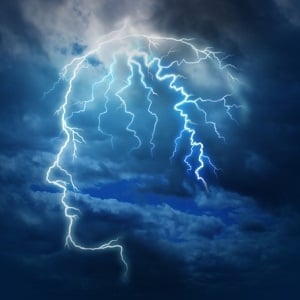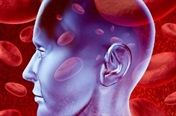
A stroke, also known as a cerebrovascular accident (CVA), occurs when an artery that supplies oxygen-rich blood to the brain bursts or becomes blocked by a blood clot. Blood clots cause destruction and swelling and often cause immediate severe neurological deficits.
If a stroke patient survives, neurological damage may substantially improve with time as the blood clot is absorbed. More commonly, if a blood vessel is blocked, cells are deprived of oxygen and die. This is known as an infarction. As a result, the part of the body controlled by those cells can no longer function properly.
Like a heart attack, a stroke requires immediate medical treatment when symptoms are noticed. In some cases, specific treatment can reduce the number of brain cells that are permanently damaged by the stroke.
The effects of a stroke depend on a number of factors, such as the extent of the brain damage and the area of the brain that is affected. The damage may be mild or severe, temporary or permanent. The patient may recover within several days or weeks after the stroke, or may never recover fully. Recovery may continue to occur for months or even years after the stroke. If limb paralysis has not disappeared by five to six months after the stroke, it will probably be permanent. The effects of a stroke also depend on which area of the brain is damaged, the number of cells or size of the area involved and how quickly the blood supply is restored to the region.
Many patients have transient ischaemic attacks (TIAs) well before the actual stroke occurs. These are short periods of reduced blood flow in an artery to the brain, which cause spells of loss of function of the region of brain supplied by that artery, but which are reversible. This temporary neurological change, for example weakness or loss of co-ordination, lasts about 5 to 30 minutes and leaves no permanent damage. However, TIAs are warnings of an impending stroke and must be taken seriously.
There are two types of stroke, namely:
Ischaemic stroke
An ischaemic stroke, also called a thrombotic or clot stroke, usually affects the cerebral hemispheres, the area of the brain that governs movement, language and the senses. Only 20% of people who have this type of stroke will die.
Haemorrhagic stroke
This type of stroke, also called a bleeding stroke, is less common than an ischaemic stroke, but more deadly – it accounts for about 50% of deaths from strokes.
Approximately one percent of the population is suffers a stroke. About 75% of people who have a stroke are older than 65 years, with strokes seldom occurring in people younger than 40.
Up to the age of 55 years, men are more at risk of a stroke than women. After this age, both sexes have the same risk. Black men are more at risk than men of other races.
Read more:
Causes of a stroke(Reviewed by Dr J. Carr, FCP(SA) Neurology, MSc(Med))




 Publications
Publications
 Partners
Partners












